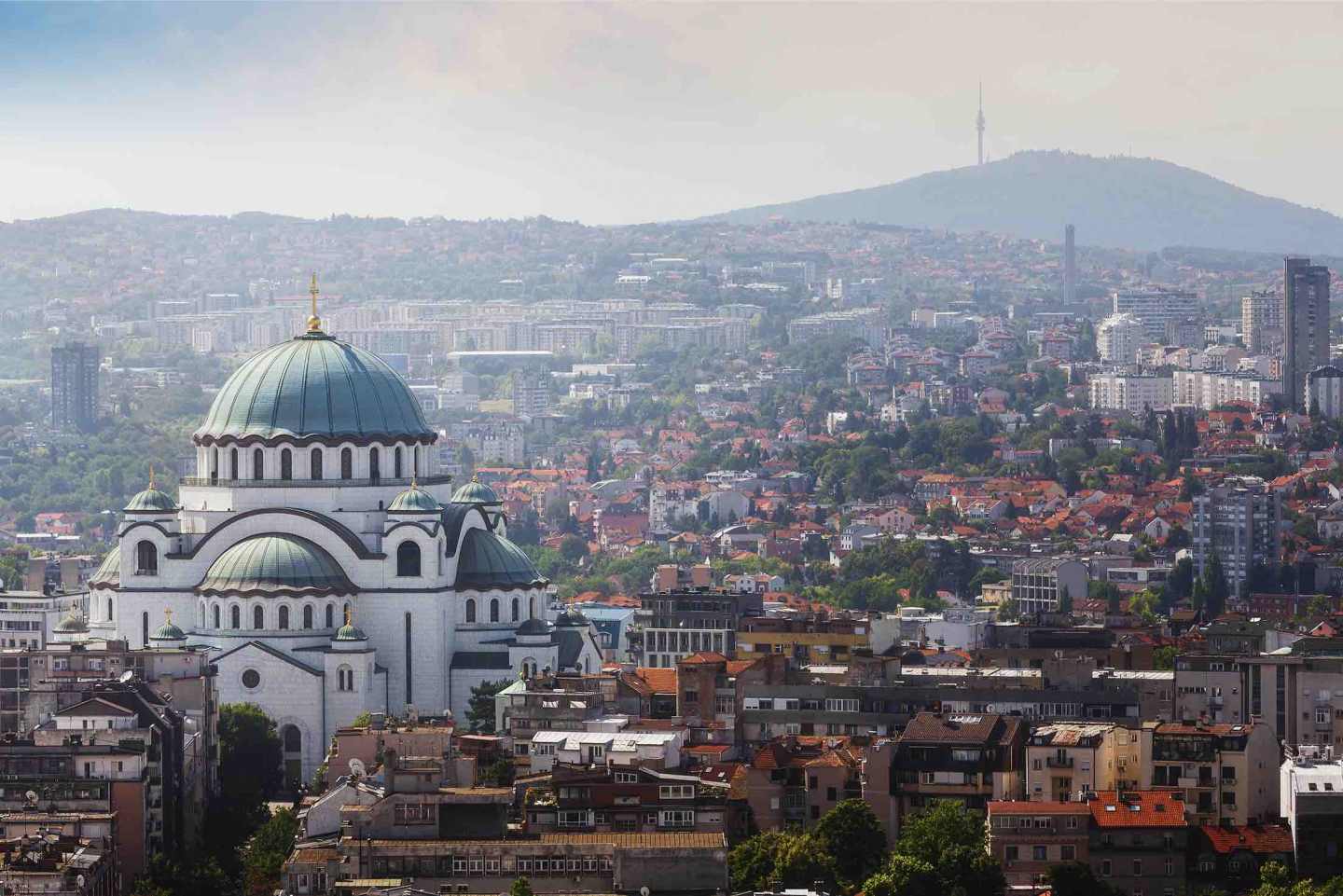塞爾維亞市場研究

塞爾維亞是尋求成長和擴張的企業的理想目的地。戰略位置、熟練的勞動力和新興產業為市場研究提供了獨特的機會,以推動明智的決策。這就是為什麼塞爾維亞的市場研究能夠發現獨特的商機並推動明智的決策。
什麼是塞爾維亞的市場研究?
塞爾維亞市場研究旨在了解塞爾維亞市場內的消費者行為、產業趨勢和競爭格局。它涉及系統調查,以確定企業可能遇到的機會和挑戰。透過進行全面的市場研究,企業可以獲得有關客戶偏好、市場需求和監管框架的寶貴見解,從而製定明智的市場進入策略和產品/服務最佳化。
為什麼企業需要塞爾維亞的市場研究?
塞爾維亞的市場研究可以深入了解塞爾維亞消費者的偏好、行為和購買模式。透過市場研究,企業可以識別塞爾維亞尚未開發的細分市場、新興趨勢和成長機會。這些資訊有助於制定符合市場需求的有針對性的市場進入策略和產品/服務開發。
此外,塞爾維亞的市場研究使企業能夠評估競爭格局並了解競爭對手的策略、優勢和劣勢。透過分析市場數據和消費者趨勢,企業可以預測塞爾維亞市場的潛在風險和挑戰。這種主動的方法可以降低風險並做出明智的決策。
何時在塞爾維亞進行市場調查

應在塞爾維亞業務發展的各個階段進行市場研究:
- 市場進入規劃:塞爾維亞的市場研究有助於在進入市場之前評估市場準備、競爭對手格局和監管環境。
- 產品開發:研究為產品調整或客製化提供信息,以符合當地的偏好和需求。
- 行銷策略:持續的研究支持持續的行銷工作,確保活動的相關性和有效性。
然而,在塞爾維亞進行市場研究活動之前,企業應考慮關鍵問題,以確保有效的規劃和執行。以下是需要提出的基本問題:
- 塞爾維亞的目標客戶是誰?
- 當地市場趨勢和偏好是什麼?
- 塞爾維亞市場的主要競爭對手有哪些?
- 競爭對手提出的進入障礙或挑戰是什麼?
- 塞爾維亞的監管要求和合規標準是什麼?
市場回顧與建議:塞爾維亞市場分析
在 SIS International,我們認為在熟練人才以及對軟體開發和數位解決方案不斷增長的需求的推動下,塞爾維亞 IT 產業將繼續成長。此外,在全球企業投資的支持下,汽車製造業仍是塞爾維亞工業基礎的基石。
展望未來,塞爾維亞的未來前景充滿希望,但也面臨挑戰。該國的加入歐盟進程提供了潛在的市場整合和監管調整的好處,為外國投資創造了有利的環境。再生能源和創新驅動型產業等新興產業預計將獲得牽引力,為經濟多元化做出貢獻。
潛在投資報酬率考慮因素: 投資塞爾維亞市場為企業帶來了有吸引力的投資報酬率考量。具有成本競爭力的勞動力、進入區域市場的機會以及政府對外國投資者的激勵措施增強了塞爾維亞作為投資目的地的吸引力。然而,投資報酬率的考量必須與法規遵循和市場特定的挑戰之間取得平衡。
策略建議:
- 多元化策略:我們建議探索傳統產業以外的機會並實現市場多元化,以利用再生能源、金融科技和電子商務等新興產業。
- 夥伴關係發展:與當地利害關係人和產業參與者建立策略夥伴關係可以利用當地的專業知識和網絡,促進市場進入並提高市場滲透率。
- 創新與數位轉型:擁抱創新和數位轉型舉措,以提高塞爾維亞不斷變化的商業環境中的營運效率、客戶參與度和市場競爭力。
- 市場進入規劃:徹底執行 市場進入規劃,考慮監管要求、市場區隔和消費者偏好來優化 市場進入策略 並降低風險。
SIS International 市場研究服務的預期結果

SIS國際的市場研究服務旨在為在塞爾維亞營運的企業提供可行的見解和有形價值。以下是預期的結果和好處:
可行的見解:
我們的市場研究為企業提供有關塞爾維亞消費者行為、市場趨勢和競爭動態的可行見解。這些見解指導策略決策,使企業能夠優化市場策略並利用成長機會。
競爭優勢:
透過了解競爭格局和市場定位,企業在塞爾維亞獲得競爭優勢。我們的研究有助於確定市場差距、新興趨勢和差異化領域,幫助企業增強市場佔有率並推動成功。
市場准入支持:
安全資訊系統 為進入塞爾維亞市場的企業提供寶貴的市場准入支援。我們協助市場可行性評估、合作夥伴識別、監管合規和市場滲透策略,促進順利和成功的市場進入過程。
投資報酬率優化:
我們的研究透過識別高潛力的細分市場、客戶細分和產品/服務機會來幫助企業優化投資報酬率。透過最小化市場風險和最大化機會,企業可以在塞爾維亞實現永續成長和獲利。
持續支持:
除了最初的研究項目外,SIS International 還提供持續的支援和市場監控,讓企業了解塞爾維亞不斷變化的市場動態。我們與客戶合作調整策略、應對新出現的挑戰並利用新機遇,確保持續成長和競爭力。
重點產業
塞爾維亞擁有以服務業為基礎的中等收入自由市場經濟。其主要產業為農業、汽車、採礦和能源。該國的主要出口產品是汽車、輪胎、賤金屬、化學品、家具、服裝、加工食品和糖。貿易在國家中扮演著至關重要的角色。該國與至少五個主要市場進行貿易:俄羅斯、德國、中國、義大利和巴爾幹半島國家。
土地肥沃。塞爾維亞在世界市場上的銷售額的五分之一來自農產品出口。例如,他們向法國和歐盟市場供應冷凍水果。該國也是玉米和小麥的重要生產國。它生產其他農產品,如向日葵、甜菜、大豆、馬鈴薯、蘋果、豬肉、牛肉、家禽和乳製品。
塞爾維亞工業的領導企業
- 諾德烏斯:Nordeus 是一家著名的塞爾維亞遊戲公司,以開發「Top Eleven」而聞名,這是一款全球數百萬人玩的流行足球管理遊戲。 Nordeus 為塞爾維亞作為遊戲和行動應用程式開發中心的聲譽做出了貢獻。
- 商品貿易統計集團:Comtrade 是塞爾維亞領先的 IT 公司,提供軟體解決方案、系統整合和 IT 服務。該公司與全球合作夥伴合作,在塞爾維亞的數位轉型中發揮著至關重要的作用。
- 菲亞特克萊斯勒汽車 (FCA) 塞爾維亞:FCA 在克拉古耶瓦茨經營製造工廠,為歐洲市場生產菲亞特汽車。該工廠是塞爾維亞汽車工業和出口的主要貢獻者。
- 扎斯塔瓦卡車:Zastava Trucks 以前稱為 FAP (Fabrika automobila Priboj),在塞爾維亞生產商用和軍用車輛。該公司專注於卡車生產並將其產品出口到國際市場。
- 維多利亞集團:維多利亞集團是塞爾維亞領先的油籽加工、農業和貿易農業企業。該公司的業務涵蓋農作物種植、石油生產和動物飼料生產。
社群
貝爾格萊德是塞爾維亞最大、人口最多的首都,被譽為「不夜城」。儘管這座城市是歐洲最古老的城市之一,但它充滿了活力。此外,河流上還有漂浮俱樂部,可以舉辦盛大的派對。諾維薩德是人口第二多的城市,被譽為「音樂、藝術和娛樂的自由之城」。
趨勢

塞爾維亞擁有大量網路使用者。它還增加了社交媒體用戶的數量。然而,該國的行動連接有所減少。
如果您的公司提供食品,塞爾維亞的主食是麵包、肉類、水果、蔬菜和乳製品。麵包是該國美食的重要組成部分。大多數宗教在其服務中使用它。在鄉下,人們送麵包和鹽給客人是很正常的事。塞爾維亞還提供許多其他食物,包括魚類和肉類菜餚。
消費者基礎
燃料價格上漲對農業部門的影響最大。加上其他因素,導緻小麥、大豆、玉米等產品價格上漲。此次上漲是在政府已經提高玉米、小麥和其他穀物的價格以支持受到綠色市場禁令影響的農業部門之後進行的。
對一般貿易和全球價值鏈(GVC)內貿易的依賴在過去幾十年裡一直不是問題。與許多其他經濟體一樣,塞爾維亞的出口很少,進口卻很高。
塞爾維亞的市場驅動因素與限制
理解 塞爾維亞的市場動力 對於考慮進入或擴張市場的企業來說,限制至關重要。它們簡要地概述了企業在進入這個市場時可能面臨的機會和挑戰。
塞爾維亞的市場驅動因素
- 經濟改革與穩定:塞爾維亞實施了經濟改革,以改善商業環境、吸引外國投資並促進經濟穩定。改革包括財政整頓、國營企業私有化和簡化監管。
- 外商直接投資 (FDI):塞爾維亞吸引了大量外國投資,特別是在製造業、汽車和資訊科技領域。外國直接投資流入有助於創造就業、技術轉移和出口成長,進而推動經濟發展。
- 區域貿易協定:塞爾維亞加入中歐自由貿易協定(CEFTA)等區域貿易協定並享有進入歐盟市場的優惠待遇,增加了塞爾維亞企業的出口機會和市場准入。
- 基礎建設發展:正在進行的基礎設施項目,包括交通網絡、能源基礎設施和數位連接,提高了物流效率並支持塞爾維亞的經濟成長。
塞爾維亞的市場限制
- 監管挑戰:塞爾維亞面臨複雜的監管和官僚障礙,可能給企業帶來挑戰,特別是在許可、許可和標準合規方面。監管改革正在進行中,但可能需要進一步改進。
- 基礎設施限制:儘管取得了進展,塞爾維亞的基礎設施,包括交通和公用事業,可能仍需要現代化和投資,以滿足不斷增長的商業需求並增強競爭力。
- 政治不確定性:政治因素和區域地緣政治動態可能會帶來不確定性並影響商業情緒。企業應隨時了解政治動態及其對市場狀況的潛在影響。
- 市場規模與消費者需求:塞爾維亞的市場規模和消費者購買力可能會為某些產業帶來挑戰,需要策略性的市場區隔和有針對性的方法來滿足不同的消費者偏好。
市場的優勢與優勢
塞爾維亞擁有許多自然資源(煤炭、鋁土礦、銅、鋅、金)和充足的食物。此外,與歐盟的穩定協議允許該國的93%產品免關稅進入歐元區。另一個關鍵點是與國際貨幣基金組織和歐盟一起實施的政府改革。此外,汽車出口也有所增加。此外,加入歐盟的進程正在進行中。
在市場上發展業務的理由。
該國擁有頂尖的學校,包括高等教育學校,並因其教學品質而聞名於世。它以多種語言提供各個層面的教學。
- 塞爾維亞貝爾格萊德是東南歐的商業和銀行中心。許多人稱之為「巴爾幹半島的瑞士」。
- 勞動力受過良好教育,但薪資較低。因此,公司可以以低廉的價格獲得優質勞動力。
- 塞爾維亞是歐洲的一部分,但尚未加入歐盟。因此,您可以享受兩個世界。
- 塞爾維亞的簽證和居留證政策易於操作,該國歡迎所有投資者。
我們在紐約的工廠位置
11 E 22nd Street, Floor 2, 紐約, NY 10010 電話:+1(212) 505-6805
關於 SIS 國際
SIS國際 提供定量、定性和策略研究。我們為決策提供數據、工具、策略、報告和見解。我們也進行訪談、調查、焦點小組和其他市場研究方法和途徑。 聯絡我們 為您的下一個市場研究項目。


